
Many people don’t ever see the land crabs in the Virgin Islands because these crustaceans live in the mangrove wetlands and mostly come out at night. The large blue kind (Cardisoma guanhumi) look a bit ghostly and can grow to about 5 or 6 inches across their backs. They have one large claw and one smaller, thinner one. And their eyes stand up on stalks.
The females are not so blue – more of a light gray. And the juveniles can be brown, orange, or purplish.
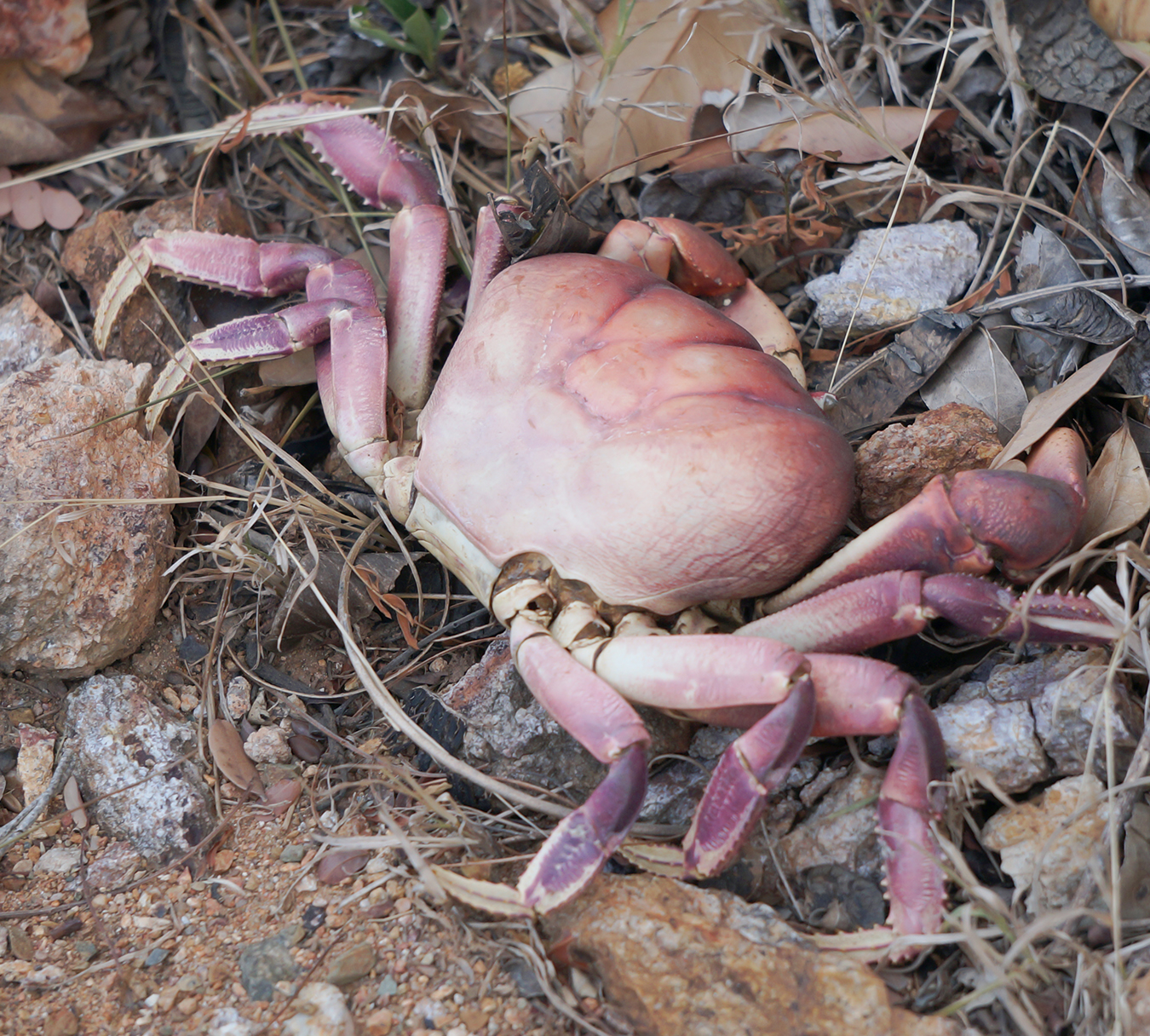
Although these crabs live on land as adults, they generally stay close to the water. They dig big holes in the mud to hide in, several feet deep, with enough water at the bottom to keep their gills damp.
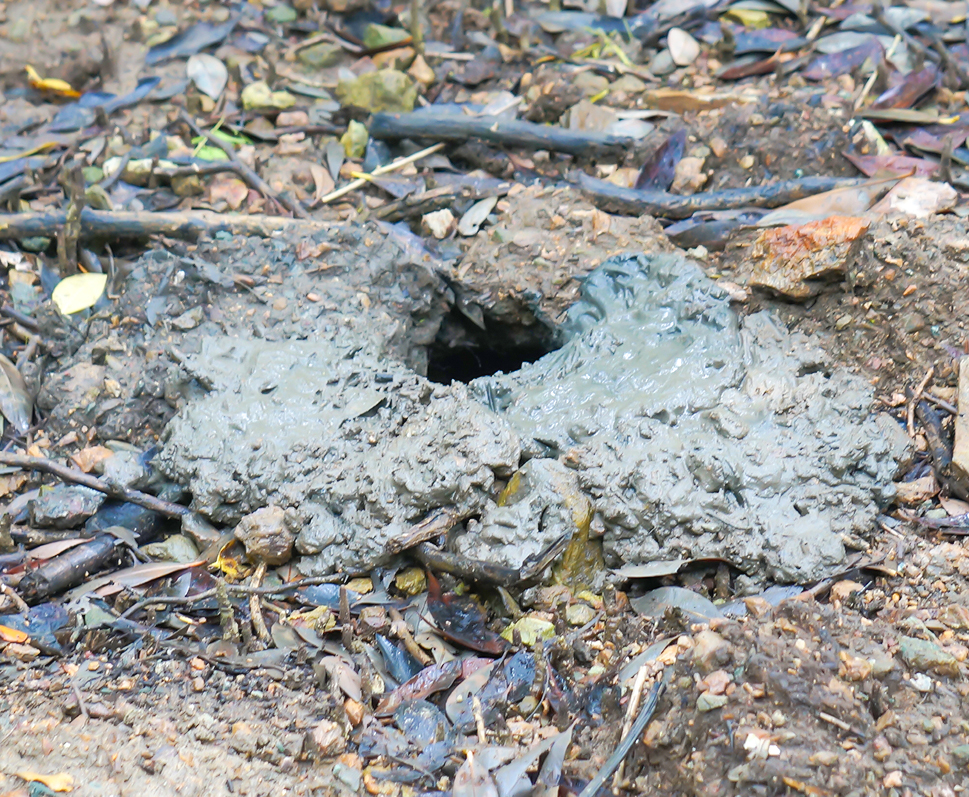
After breeding on a full moon during the rainy season, the females deposit their eggs a couple of weeks later into shallow saltwater nearby. As they grow up, the young ones may be carried by currents to other shorelines.
Our house is close to the land crabs’ territory, and they sometimes climb up the hill to visit. I occasionally wake up to hear them rattling around on the front deck, which I don’t really understand. They mostly eat leaves and vegetation, plus maybe some insects and dead things. There might be some of those things near our house, but a lot less than down by the mangroves. I think they might just be curious.

I was frightened of them at first. Especially when I saw them waving their big claws around.
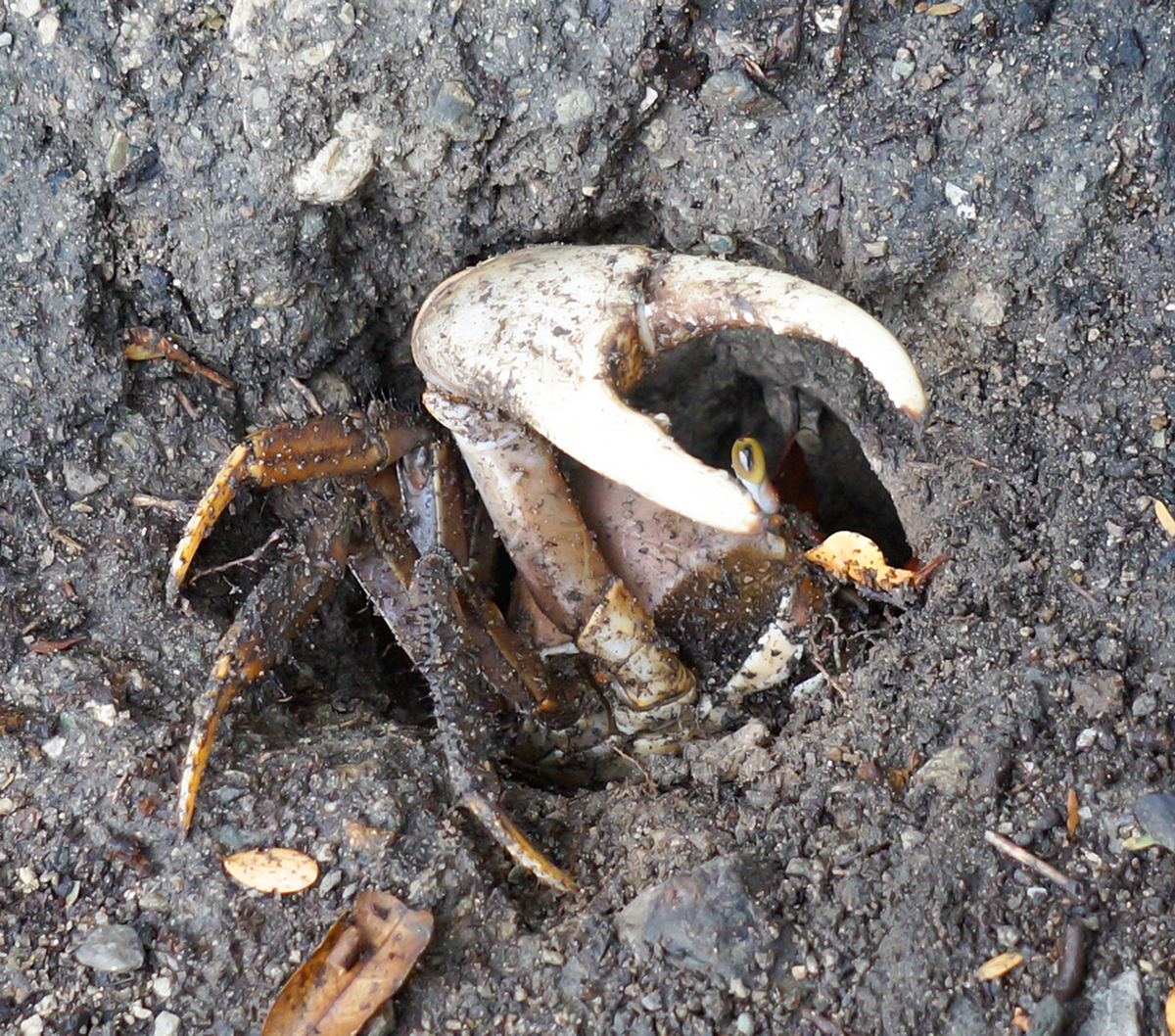
They could possibly give you a sharp nip, though it seems that the small claw is the sharper one.
I learned that they are able to cut through tough stuff when my older son decided to catch one and tie it up with fishing line.
We had sometimes seen people hunting for the crabs at night with flashlights and putting them in buckets. We were told they were good to eat, especially with rice or in a local soup called callaloo (or kallaloo). But first, you have to feed them corn for a couple of weeks to clean out their digestive systems – because of those dead things they might eat.
So my son was going to keep the crab in a bucket and feed it clean food but didn’t have a cage, so he tied a piece of the fishing line to the crab’s leg and then to the bucket handle. The next day he was disappointed to see that the line was cut through and the crab was gone.
The Yellow-crowned Night Herons also like to eat crabs and aren’t so particular about how clean their food is. The night herons have thick bills that they use to punch right through the crabs’ shells.
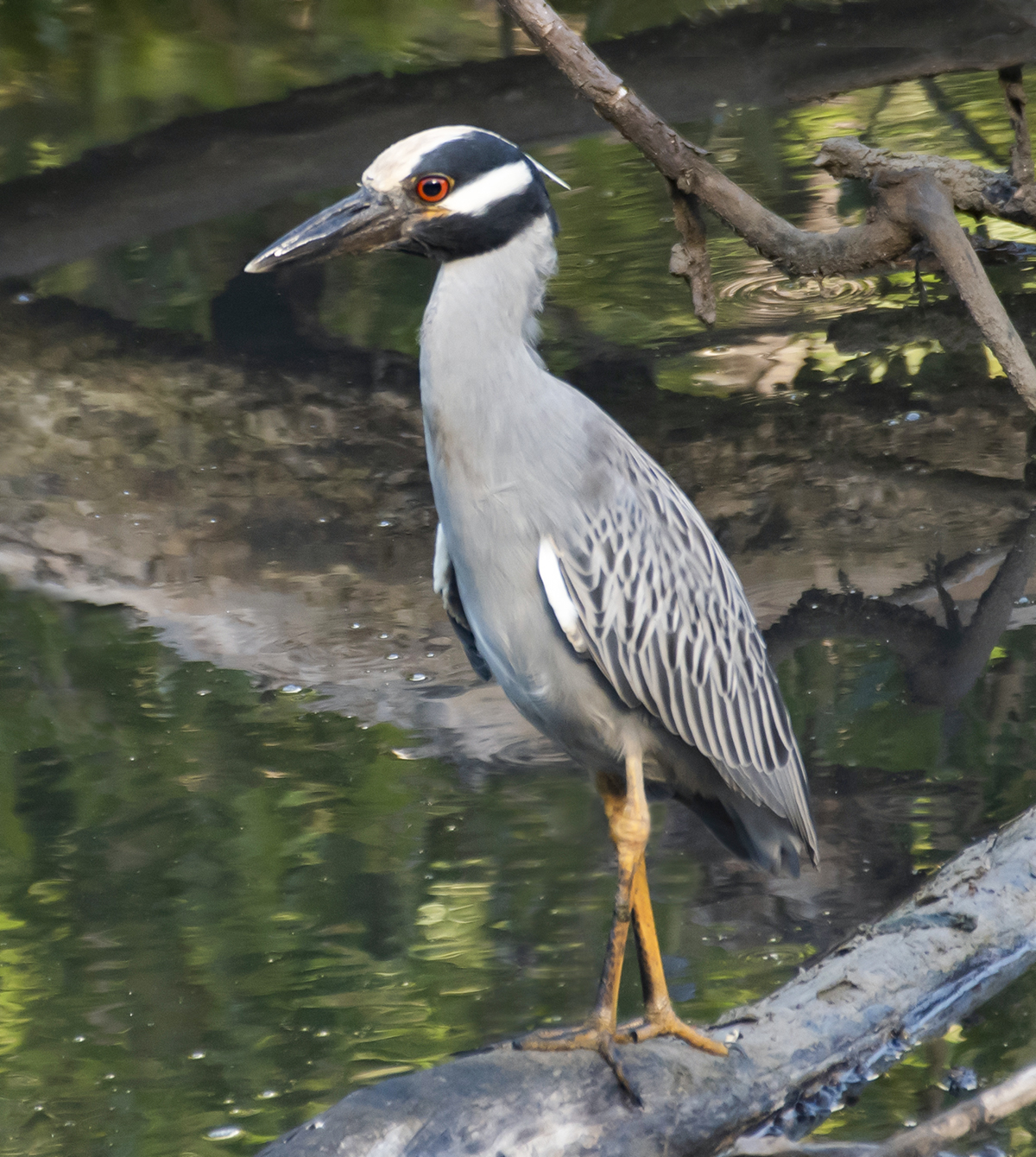
I sometimes see crab pieces lying around below the house and shells with sharp bill-sized holes cut in the back.
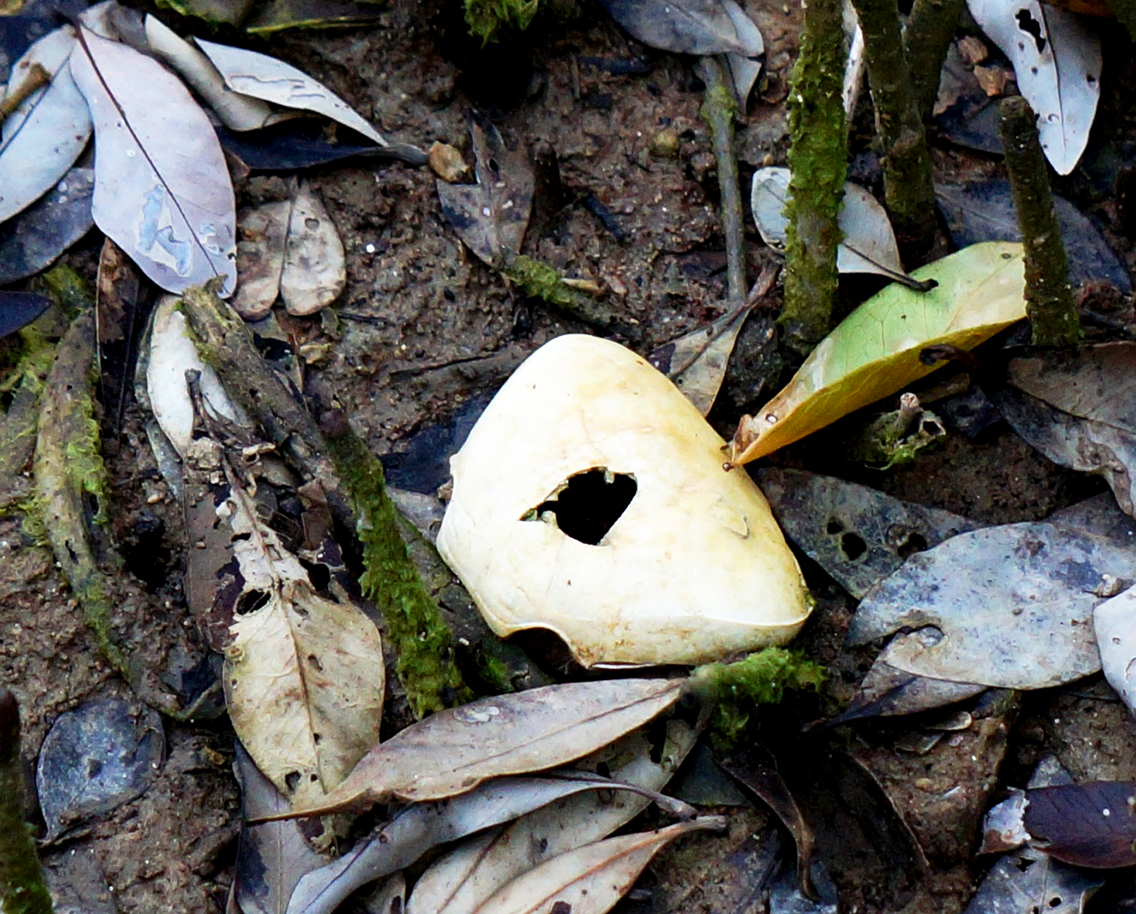
Once I even saw the visiting Scarlet Ibis walking around with a crab leg in its mouth. Its long bill is meant for digging in the mud, not poking holes in shells, but apparently, it was strong enough to tear off a crab claw. I’m not sure about how the bird gets the meat out, though. Maybe it has to swallow the whole piece and then dissolve the shell with its digestive juices.

It’s a complex struggle for survival in the mangroves, and I sometimes feel a bit sorry for the crabs. Their shells look pretty tough, but they are actually quite fragile. As are their wetland habitats due to the effects of climate change and human encroachment. But meanwhile, I am happy that the birds I love have a good supply of food, which makes them want to stay around the neighborhood.
*Gail Karlsson is an environmental lawyer, writer, and photographer. She is the author of two books about the Virgin Islands – The Wild Life in an Island House and the guide book Learning About Trees and Plants – A Project of the Unitarian Universalist Fellowship of St. John. She has also recently published A Birds’ Guide to The Battery and New York Harbor. Follow her on Instagram @gailkarlsson and gvkarlsson.blogspot.com.





